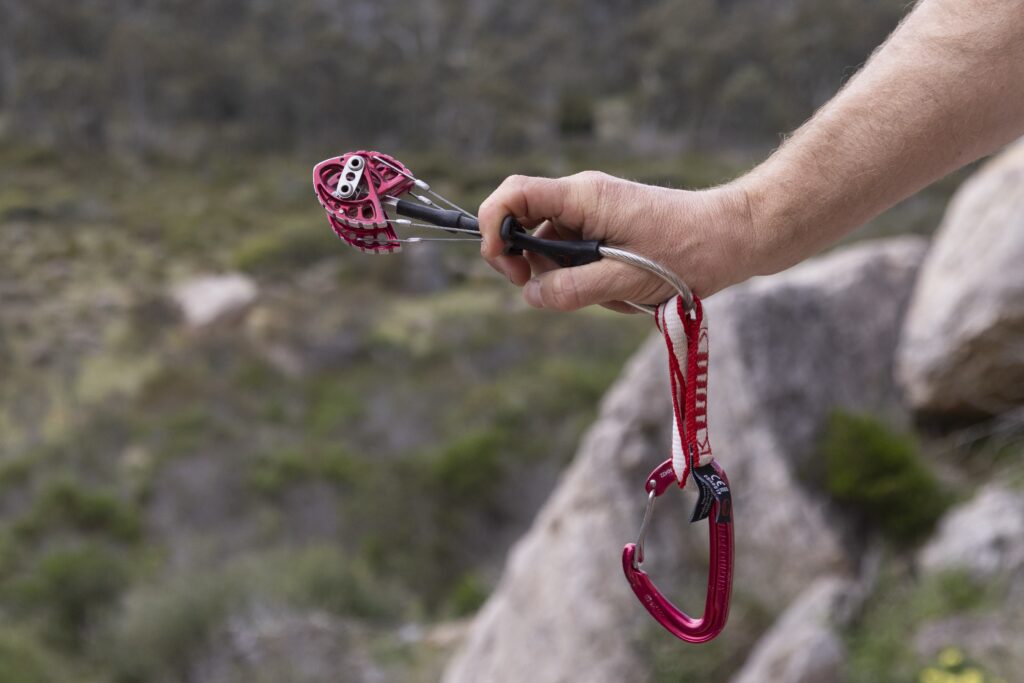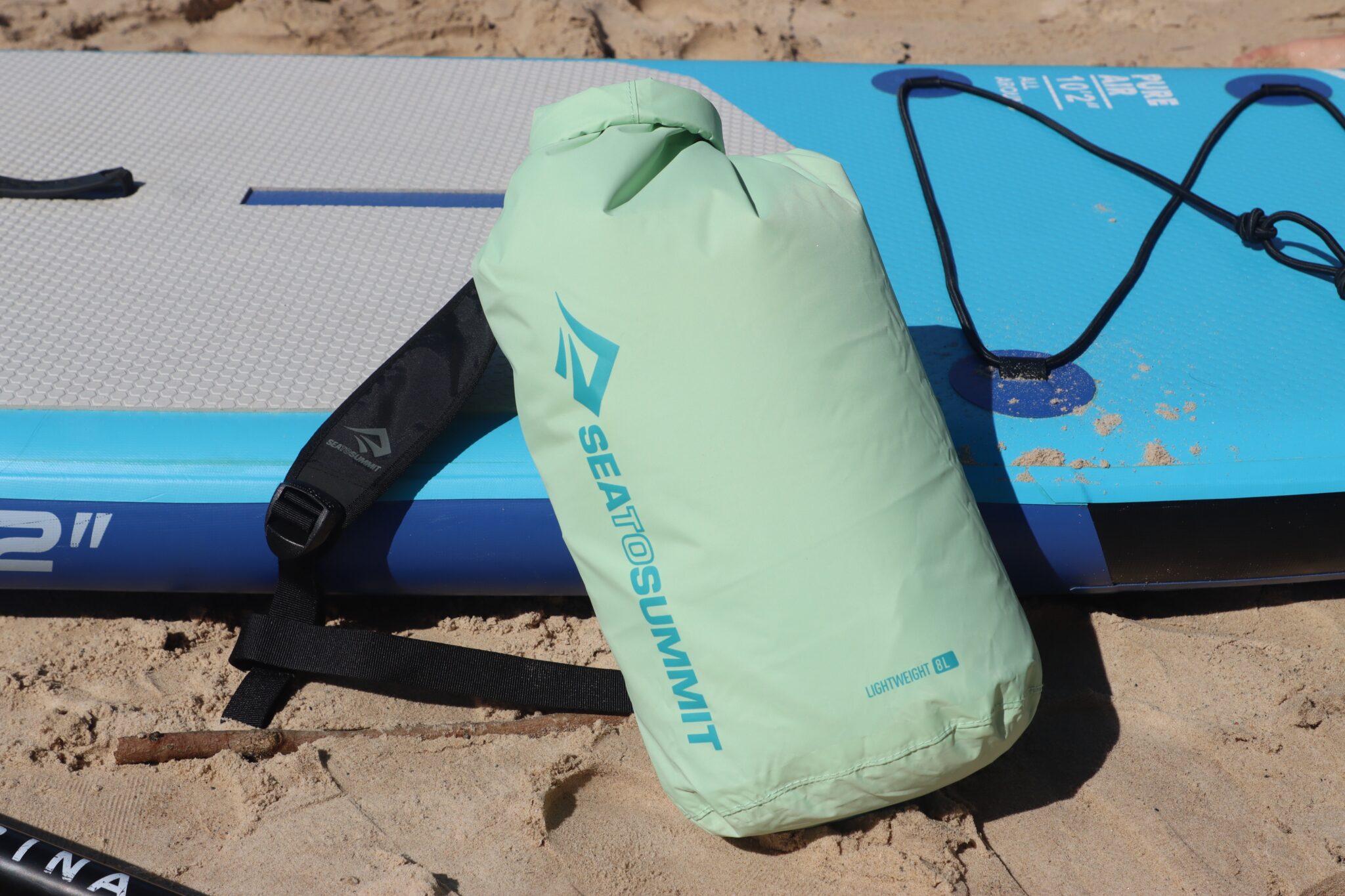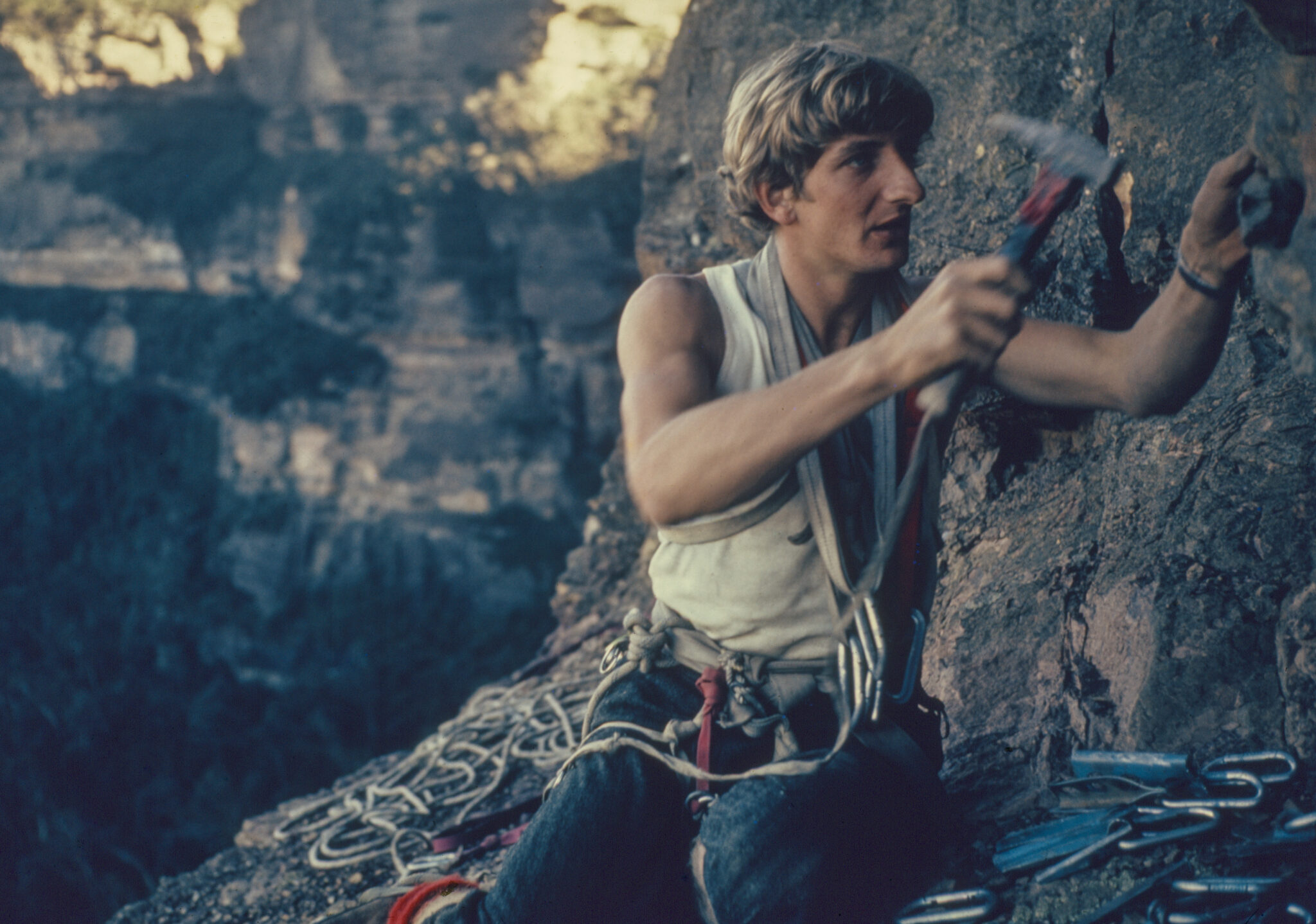All the gear and no idea
New climbers pushing onto the sharp end without the right skills isn’t a recent phenomenon—it’s been happening for decades. From tangled ropes to shaky placements, this reflection looks at the growing issue of underprepared trad leaders, the responsibility that comes with leading, and the importance of speaking up when you see something unsafe at the crag.
It’s 4 p.m. at a semi-remote crag when three climbers wander up to the base of the cliff. The leader’s harness jangles with shiny new cams, his rope still factory-fresh. Within moments, it’s obvious—these three are new to this.
The leader, doing his best to explain the basics to his two partners, jumps on a multi-pitch trad climb. He’s runout almost immediately, gets confused, and asking for directions mid-route, then panics when an epic amount of rope drag stops him in his tracks. Pumped out, he falls on the gear, it’s clear he’s highly unprepared.
Down below, his belayer—having never used a GriGri—keeps taking his hand off the brake strand while feeding slack. After a few tense moments, I can’t watch anymore and step in, coaching the belayer through proper technique and how much slack to give, while advising the leader to add some extenders to his zigzagging gear placements.
Not long after, my friend—on a pitch beside them—calls out when the leader then tries to top belay above his anchor. He step in, offering quiet corrections, doing his best to keep everyone safe.
Neither of us enjoy telling people how to climb, but we also don’t want to be making another 000 call on what’s supposed to be a relaxed day out.
⸻
In recent weeks, I’ve found myself speaking up more often to prevent accidents involving beginner climbers. The enthusiasm is there, but the experience often isn’t.
A few weeks ago, I witnessed a freshly qualified guide taking a new climber up a two-pitch trad route. From the sound of it, she had never experienced a trad climb let alone placed gear before. I heard her ask, “So, is this what a cam should look like when it’s placed?” as she prepared to lead the second pitch.
That’s not the kind of question you want to be asking halfway up a multi-pitch.
While I understand that everyone has to start somewhere, telling someone to lead before they can even identify a solid placement is, in my view, reckless. Trad climbing is not something you can learn from a few YouTube videos and a trip to the gear shop. You can send 23s in the gym all day long—but that doesn’t mean you’re ready to lead a trad route.

⸻
Where to Start
In my opinion, no climber should start leading trad until they can:
• Competently place and evaluate gear,
• Set up a trad anchor & top-belay system
• Perform basic self-rescue techniques.
And have some experience seconding trad climbs.
Leading also comes with responsibility. When you tie in as the leader, you’re not just looking after yourself—you’re responsible for your belayer and everyone else sharing that space. A fall, dropped gear, or bad decision can injure not just the leader but also the belayer and nearby climbers.
An accident doesn’t just affect one person; it ripples through the entire crag community that day. Having been first on scene to a climbing accident, it can affect you for a long time after, even if you weren’t directly involved.
I’ll be the first to admit, I wasn’t perfect when I started either. My first trad lead? I barely knew how to build a top belay and chose a climb that, in hindsight, wasn’t suitable for a beginner leader. The only thing that saved me was years of seconding experience—hundreds of gear placements I’d cleaned, studied, and learned from.
When I got back to camp that day, buzzing with excitement, an experienced friend said, “Good on ya—but that was a risky one to take on.” They were right. I wasn’t ready.
That moment stuck with me, and since then, my advice to anyone new to trad has been the same: Become a strong second climber first. Learn the craft, the systems, and the placements before you ever tie in as the leader.
⸻
By the time I felt truly ready to start leading, I’d been seconding for over three years. I could visualize a good placement before I even placed it, and from cleaning gear, I knew how solid pieces were constructed.
I also sought professional instruction. I took Learn to Lead Trad and Climber’s Self Rescue courses through the Australian School of Mountaineering, and spent time with an experienced mentor who showed me—hands-on—the difference between good and bad placements.
Even now, if I’ve had a break from leading, I drop my grades back to 9s or 10s. Trad isn’t a discipline you can fake your way through—it demands humility, patience, and time.
Speaking Up When You See Something Dangerous
It can feel awkward to step in when you see another climber doing something unsafe, but silence can be far more costly than a brief uncomfortable moment. The key is how you approach it. Start with curiosity, not criticism—ask questions rather than making accusations. For example: “Hey, mind if I check that setup with you?” or “I’ve done this climb before—want a quick tip about the anchor?” A calm, friendly tone shows you’re coming from a place of care, not ego. Most people are grateful once they realize you’re genuinely trying to help. If it’s an immediate safety issue—like a misused device or an unsecured anchor—step in clearly but respectfully. We all share responsibility for the safety culture at the crag, and speaking up could prevent an accident that affects everyone there.
⸻
Everyone starts somewhere. But rushing through the process, skipping steps, or assuming gym strength will translate to the sharp end of a trad route can have serious consequences.
If you’re new to trad, take the time to second, start on low grades, seek out mentors, and invest in professional training. Schools like The Climbing Company (VIC) and the Australian School of Mountaineering (NSW) offer excellent beginner-to-advanced courses.
Trad climbing is one of the most rewarding ways to experience the vertical world—but only if you respect the process that keeps you safe.






